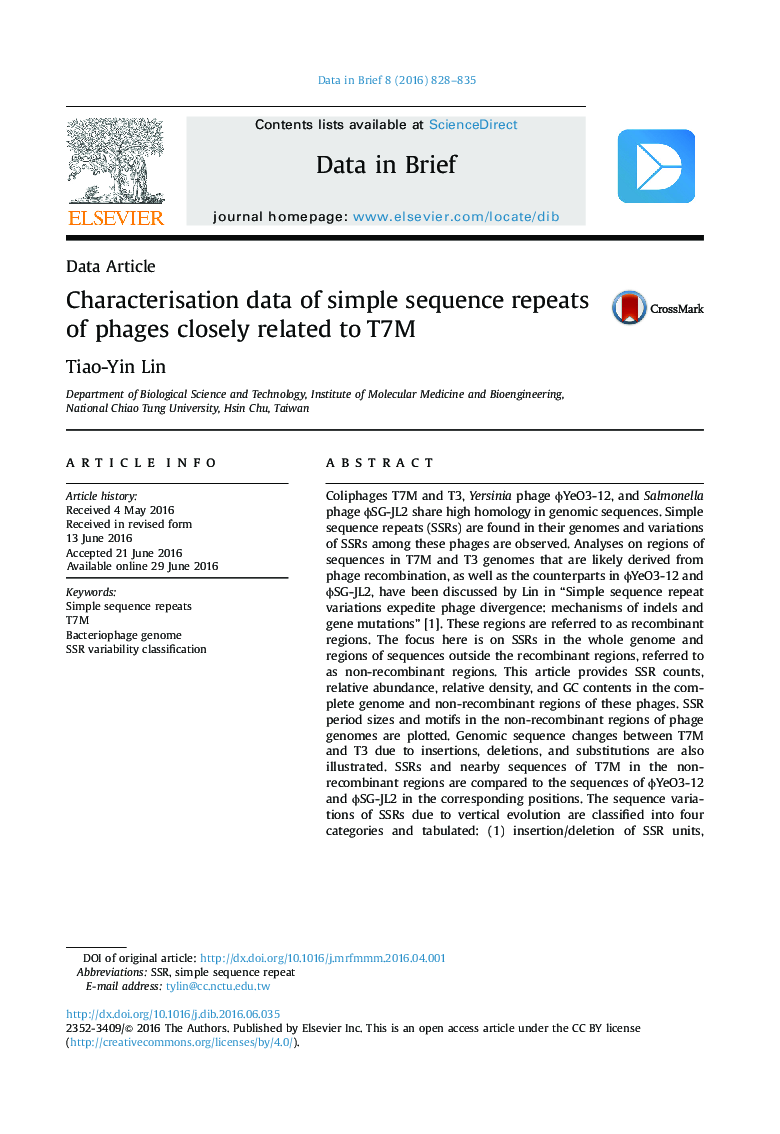| Article ID | Journal | Published Year | Pages | File Type |
|---|---|---|---|---|
| 174727 | Data in Brief | 2016 | 8 Pages |
Coliphages T7M and T3, Yersinia phage ϕYeO3-12, and Salmonella phage ϕSG-JL2 share high homology in genomic sequences. Simple sequence repeats (SSRs) are found in their genomes and variations of SSRs among these phages are observed. Analyses on regions of sequences in T7M and T3 genomes that are likely derived from phage recombination, as well as the counterparts in ϕYeO3-12 and ϕSG-JL2, have been discussed by Lin in “Simple sequence repeat variations expedite phage divergence: mechanisms of indels and gene mutations” [1]. These regions are referred to as recombinant regions. The focus here is on SSRs in the whole genome and regions of sequences outside the recombinant regions, referred to as non-recombinant regions. This article provides SSR counts, relative abundance, relative density, and GC contents in the complete genome and non-recombinant regions of these phages. SSR period sizes and motifs in the non-recombinant regions of phage genomes are plotted. Genomic sequence changes between T7M and T3 due to insertions, deletions, and substitutions are also illustrated. SSRs and nearby sequences of T7M in the non-recombinant regions are compared to the sequences of ϕYeO3-12 and ϕSG-JL2 in the corresponding positions. The sequence variations of SSRs due to vertical evolution are classified into four categories and tabulated: (1) insertion/deletion of SSR units, (2) expansion/contraction of SSRs without alteration of genome length, (3) changes of repeat motifs, and (4) generation/loss of repeats.
